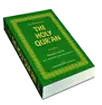Number of U.S. mosques up 74% since 2000
While protests against new mosques in New York, Tennessee and California made headlines, the overall number of mosques quietly rose from 1,209 in 2000 to 2,106 in 2010.
And most of their leaders say American society is not hostile to Islam, according to a comprehensive census of U.S. mosques and survey of imams, mosque presidents and board members released Wednesday.
“This is a very healthy community,” said lead researcher and study author Ihsan Bagby, an associate professor of Islamic studies at the University of Kentucky.
They’re also very engaged: The study finds “98% of mosque leaders say Muslims should be involved in American institutions and 91% agree that Muslims should be involved in politics.”
The study — The American Mosque 2011 — was sponsored by the Hartford Institute for Religion Research (Hartford Seminary), the Association of Statisticians of American Religious Bodies, as well as the nation’s largest Islamic civic and religious groups, including the Islamic Society of North America and the Council on American-Islamic Relations.
Muslims feared being “marginalized, demonized and isolated” after 9/11, said Safaa Zarzour, secretary general of the Islamic Society. But the new study shows they have “kept their eyes on the prize — becoming part of mainstream America.”
Major findings include:
•States with the most mosques are New York (257), California (246) and Texas (166).
•Most mosques are in cities, but 28% were in suburban sites in 2010, up from 16% in 2000.
•Mosques are ethnically diverse. The major participants are South Asians, Arabs and African Americans, with growing numbers of new immigrants including Somalis, West Africans and Iraqis. The study did not include Nation of Islam mosques because it is a separate religion.
•Most mosque leaders (87%) say “radicalism and extremism” are not increasing among Muslim youth, “in their own experience.” They say the greater challenge is “attracting and keeping them close to the mosque.”
All religious groups should be worried about losing their youth, said David Roozen, who directs the Hartford Institute, which overseas an every-decade look at the growth and health of U.S. religious congregations, Faith Communities Today.
Islam will continue to grow, he said, and the old summation of American religion — Protestant, Catholic, Jew — may soon be revised. But it won’t be Protestant, Catholic Muslim, Roozen said.
“The fastest growing group of all is those with no religion,” Roozen said.
Although the study does not claim to say how many Muslims are in the USA, Bagby estimates there are 2.6 million “mosque participants” — people who have attended prayers for Eid (a major holy day) or Friday prayers or were considered participants by the mosque leader survey.
Bagby says he reached the number by taking mosque attendance reported by the leadership and multiplying the average number of attendees by the number of mosques.
Bagby’s report concludes, “If there are 2.6 million Muslims who pray the Eid prayer, then the total Muslim population should be closer to estimates (by Bagby) of up to 7 million.”
No other survey projects even 3 million Muslims in the USA.
For example, a 2010 survey on global Muslim population by the Pew Forum on Religion & Public Life found there were 2.6 million Muslims, including adults and children, in the country. And a 2011 survey by the same research group found 2.75 million Muslims, including 1.8 million adults.
Bagby disputes other studies, saying they underestimate because they are based on random phone interviews and many Muslims, particularly immigrants, will not discuss their religion with a stranger on the phone.
However, the Pew research, which included phone interviews in four languages, also synthesized data from the Census Bureau and immigration authorities. Pew used country-of-birth information with data from surveys on the percentage of people from each country, or group of countries, who belong to various faiths.














